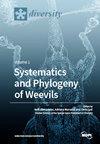结合时空遥感和人类足迹指数识别生物多样性保护热点
IF 2.1
3区 生物学
Q2 BIODIVERSITY CONSERVATION
引用次数: 0
摘要
以内蒙古为研究区,结合气候变化的生态学理论和人类活动对生物多样性格局的广泛影响,利用MODIS多时间序列遥感影像数据,采用拟合曲线的方法获得年际变化指数,得到年候和季节指标。同时,计算Landsat 8标准偏差图像,得到空间变异指数,生成时空遥感指数,量化气候变化对生物多样性的威胁。此外,通过绘制内蒙古地区人类足迹图谱,量化了人类活动对生物多样性的影响。结合时空遥感指数和人类足迹指数,分别识别气候变化和人类活动保护区域。最终获得内蒙古生物多样性保护热点区域,并根据热点识别结果进行重点保护区规划。本研究利用遥感技术识别生物多样性保护热点,可以克服以往物种数据不足的局限性,提高大规模生物多样性保护分析的可靠性,并可用于有针对性的管理行动,对生物多样性保护规划具有现实意义。本文章由计算机程序翻译,如有差异,请以英文原文为准。
Combining Spatial–Temporal Remote Sensing and Human Footprint Indices to Identify Biodiversity Conservation Hotspots
Considering Inner Mongolia as the study area, the ecological theory of climate change, and human activities affecting a wide range of biodiversity patterns, MODIS multi-timeseries remote sensing image data were used and the interannual variation index was obtained by the method of fitting the curve to obtain the annual phenological and seasonal indicators. At the same time, the Landsat 8 standard deviation image was calculated to obtain the spatial variation index and generate spatial–temporal remote sensing indices to quantify the threat of climate change to biodiversity. In addition, the impact of human activities on biodiversity was quantified by generating a map of the human footprint in Inner Mongolia. The spatial–temporal remote sensing index and the human footprint index were integrated to identify areas protected from climate change and human activities, respectively. Eventually, the hotspot areas of biodiversity conservation in Inner Mongolia were obtained and priority protected area planning was based on the hotspot identification results. In this study, remote sensing technology was used to identify biodiversity conservation hotspots, which can overcome the limitations of insufficient species data from the past, improve the reliability of large-scale biodiversity conservation analyses, and be used for targeted management actions that have practical significance for biodiversity conservation planning.
求助全文
通过发布文献求助,成功后即可免费获取论文全文。
去求助
来源期刊

Diversity-Basel
Environmental Science-Ecological Modeling
CiteScore
3.40
自引率
12.50%
发文量
925
审稿时长
11 weeks
期刊介绍:
Diversity (ISSN 1424-2818) is an international and interdisciplinary journal of science concerning diversity concept and application, diversity assessment and diversity preservation. It is focused on organismic and molecular diversity. It publishes reviews, regular research papers and short notes in the regular issues. Related news and announcements are also published. Our aim is to encourage scientists to publish their experimental and theoretical results in as much detail as possible. Therefore, there is no restriction on the length of the papers. Full experimental details must be provided so that the results can be reproduced.
 求助内容:
求助内容: 应助结果提醒方式:
应助结果提醒方式:


